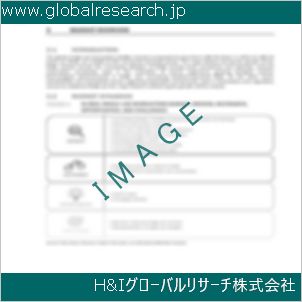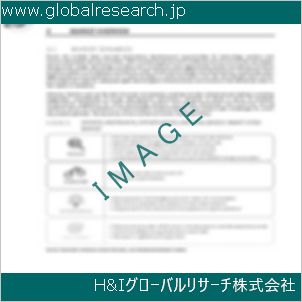Table of Contents
1 Industry Overview of Methanol
1.1 Definition and Specifications of Methanol
1.1.1 Definition of Methanol
1.1.2 Specifications of Methanol
1.2 Classification of Methanol
1.3 Applications of Methanol
1.3.1 Nuclear Application
1.3.2 Non-Nuclear Application
1.4 Industry Chain Structure of Methanol
1.5 Industry Overview and Major Regions Status of Methanol
1.5.1 Industry Overview of Methanol
1.5.2 Global Major Regions Status of Methanol
1.6 Industry Policy Analysis of Methanol
1.7 Industry News Analysis of Methanol
2 Manufacturing Cost Structure Analysis of Methanol
2.1 Raw Material Suppliers and Price Analysis of Methanol
2.2 Equipment Suppliers and Price Analysis of Methanol
2.3 Labor Cost Analysis of Methanol
2.4 Other Costs Analysis of Methanol
2.5 Manufacturing Cost Structure Analysis of Methanol
2.6 Manufacturing Process Analysis of Methanol
3 Technical Data and Manufacturing Plants Analysis of Methanol
3.1 Capacity and Commercial Production Date of Global Methanol Major Manufacturers in 2023
3.2 Manufacturing Plants Distribution of Global Methanol Major Manufacturers in 2023
3.3 R&D Status and Technology Source of Global Methanol Major Manufacturers in 2023
3.4 Raw Materials Sources Analysis of Global Methanol Major Manufacturers in 2023
4 Capacity, Production and Revenue Analysis of Methanol by Regions, Types and Manufacturers
4.1 Global Capacity, Production and Revenue of Methanol by Regions 2019-2024
4.2 Global and Major Regions Capacity, Production, Revenue and Growth Rate of Methanol 2019-2024
4.3 Global Capacity, Production and Revenue of Methanol by Types 2019-2024
4.4 Global Capacity, Production and Revenue of Methanol by Manufacturers 2019-2024
5 Price, Cost, Gross and Gross Margin Analysis of Methanol by Regions, Types and Manufacturers
5.1 Price, Cost, Gross and Gross Margin Analysis of Methanol by Regions 2019-2024
5.2 Price, Cost, Gross and Gross Margin Analysis of Methanol by Types 2019-2024
5.3 Price, Cost, Gross and Gross Margin Analysis of Methanol by Manufacturers 2019-2024
6 Consumption Volume, Consumption Value and Sale Price Analysis of Methanol by Regions, Types and Applications
6.1 Global Consumption Volume and Consumption Value of Methanol by Regions 2019-2024
6.2 Global and Major Regions Consumption Volume, Consumption Value and Growth Rate of Methanol 2019-2024
6.3 Global Consumption Volume and Consumption Value of Methanol by Types 2019-2024
6.4 Global Consumption Volume and Consumption Value of Methanol by Applications 2019-2024
6.5 Sale Price of Methanol by Regions 2019-2024
6.6 Sale Price of Methanol by Types 2019-2024
6.7 Sale Price of Methanol by Applications 2019-2024
6.8 Market Share Analysis of Methanol by Different Sale Price Levels
7 Supply, Import, Export and Consumption Analysis of Methanol
7.1 Supply, Consumption and Gap of Methanol 2019-2024
7.2 Global Capacity, Production, Price, Cost, Revenue, Supply, Import, Export and Consumption of Methanol 2019-2024
7.3 USA Capacity, Production, Price, Cost, Revenue, Supply, Import, Export and Consumption of Methanol 2019-2024
7.4 EU Capacity, Production, Price, Cost, Revenue, Supply, Import, Export and Consumption of Methanol 2019-2024
7.5 China Capacity, Production, Price, Cost, Revenue, Supply, Import, Export and Consumption of Methanol 2019-2024
7.6 Japan Capacity, Production, Price, Cost, Revenue, Supply, Import, Export and Consumption of Methanol 2019-2024
8 Major Manufacturers Analysis of Methanol
8.1 Manufacturer One
8.1.1 Company Profile
8.1.2 Product Picture and Specifications
8.1.2.1 Type I
8.1.2.2 Type II
8.1.2.3 Type III
8.1.3 Capacity, Production, Price, Cost, Gross and Revenue
8.1.4 Contact Information
8.2 Manufacturer Two
8.2.1 Company Profile
8.2.2 Product Picture and Specifications
8.2.2.1 Type I
8.2.2.2 Type II
8.2.2.3 Type III
8.2.3 Capacity, Production, Price, Cost, Gross and Revenue
8.2.4 Contact Information
8.3 Manufacturer Three
8.3.1 Company Profile
8.3.2 Product Picture and Specifications
8.3.2.1 Type I
8.3.2.2 Type II
8.3.2.3 Type III
8.3.3 Capacity, Production, Price, Cost, Gross and Revenue
8.3.4 Contact Information
8.4 Manufacturer Four
8.4.1 Company Profile
8.4.2 Product Picture and Specifications
8.4.2.1 Type I
8.4.2.2 Type II
8.4.2.3 Type III
8.4.3 Capacity, Production, Price, Cost, Gross and Revenue
8.4.4 Contact Information
8.5 Manufacturer Five
8.5.1 Company Profile
8.5.2 Product Picture and Specifications
8.5.2.1 Type I
8.5.2.2 Type II
8.5.2.3 Type III
8.5.3 Capacity, Production, Price, Cost, Gross and Revenue
8.5.4 Contact Information
…
9 Marketing Trader or Distributor Analysis of Methanol
9.1 Marketing Channels Status of Methanol
9.2 Traders or Distributors with Contact Information of Methanol by Regions
9.3 Ex-work Price, Channel Price and End Buyer Price Analysis of Methanol
9.4 Regional Import, Export and Trade Analysis of Methanol
10 Industry Chain Analysis of Methanol
10.1 Upstream Major Raw Materials Suppliers Analysis of Methanol
10.1.1 Major Raw Materials Suppliers with Contact Information Analysis of Methanol
10.1.2 Major Raw Materials Suppliers with Supply Volume Analysis of Methanol by Regions
10.2 Upstream Major Equipment Suppliers Analysis of Methanol
10.2.1 Major Equipment Suppliers with Contact Information Analysis of Methanol
10.2.2 Major Equipment Suppliers with Product Pictures Analysis of Methanol by Regions
10.3 Downstream Major Consumers Analysis of Methanol
10.3.1 Major Consumers with Contact Information Analysis of Methanol
10.3.2 Major Consumers with Consumption Volume Analysis of Methanol by Regions
10.4 Supply Chain Relationship Analysis of Methanol
11 Development Trend of Analysis of Methanol
11.1 Capacity, Production and Revenue Forecast of Methanol by Regions and Types
11.1.1 Global Capacity, Production and Revenue of Methanol by Regions 2024-2029
11.1.2 Global and Major Regions Capacity, Production, Revenue and Growth Rate of Methanol 2024-2029
11.1.3 Global Capacity, Production and Revenue of Methanol by Types 2024-2029
11.2 Consumption Volume and Consumption Value Forecast of Methanol by Regions, Types and Applications
11.2.1 Global Consumption Volume and Consumption Value of Methanol by Regions 2024-2029
11.2.2 Global and Major Regions Consumption Volume, Consumption Value and Growth Rate of Methanol 2024-2029
11.2.3 Global Consumption Volume and Consumption Value of Methanol by Types 2024-2029
11.2.4 Global Consumption Volume and Consumption Value of Methanol by Applications 2024-2029
11.3 Supply, Import, Export and Consumption Forecast of Methanol
11.3.1 Supply, Consumption and Gap of Methanol 2024-2029
11.3.2 Global Capacity, Production, Price, Cost, Revenue, Supply, Import, Export and Consumption of Methanol 2024-2029
11.3.3 USA Capacity, Production, Price, Cost, Revenue, Supply, Import, Export and Consumption of Methanol 2024-2029
11.3.4 EU Capacity, Production, Price, Cost, Revenue, Supply, Import, Export and Consumption of Methanol 2024-2029
11.3.5 China Capacity, Production, Price, Cost, Revenue, Supply, Import, Export and Consumption of Methanol 2024-2029
11.3.6 Japan Capacity, Production, Price, Cost, Revenue, Supply, Import, Export and Consumption of Methanol 2024-2029
12 New Project Investment Feasibility Analysis of Methanol
12.1 New Project SWOT Analysis of Methanol
12.2 New Project Investment Feasibility Analysis of Methanol
13 Conclusion of the Global Methanol (CAS 67-56-1) Industry 2024 Market Research Report
| ※参考情報 メタノールは、化学式CH₃OHで表されるアルコールの一種です。CAS番号は67-56-1であり、無色透明の液体で、特有の甘い香りを持つ化合物です。メタノールは、燃料や溶媒、化学薬品の原料など、多岐にわたる用途で利用されています。その重要性は、工業的な製造プロセスからエネルギーの貯蔵、さらには新しいエネルギー源としての可能性にまで及びます。 メタノールは、自然界にも存在し、特に植物や動物の代謝過程において生成されます。しかし、工業的に製造されるメタノールは、主に天然ガスや石炭から作られます。通常、これらの原料を高温で反応させることで、水素と一酸化炭素を生成し、それをメタノールに変換するプロセスが一般的です。 メタノールの特徴的な性質の一つは、その極性です。水分子と同様に、メタノール分子には極性のある-OH基が含まれるため、水に溶けやすい特性を持っています。このため、メタノールは多くの有機溶媒と混和することができ、様々な化学反応に利用されます。また、沸点が低く、揮発性が高いため、揮発性溶媒としても広く使用されています。 メタノールには主に二つの種類があります。第一は、純粋なメタノールであり、主に工業用に製造されるものです。第二は、燃料用メタノールであり、燃焼エネルギーを利用するために特別に精製されています。これらのバリエーションは、用途に応じて異なる規格や純度で販売されています。 メタノールの用途は多岐に渡ります。先ずは、燃料としての利用です。メタノールは、クリーンな燃焼を実現するための代替燃料として注目されており、特に燃料電池車やバイオ燃料の研究開発に利用されています。メタノールを燃料とするエンジンは、CO₂排出を抑えることができるため、環境負荷の低減が期待されています。 さらに、メタノールは化学工業においても重要な原料です。ホルムアルデヒドやメチルエステル、メチルアミンなど、さまざまな化学品の前駆体として利用されます。また、コーティング剤やプラスチック、繊維などの製造にも欠かせない存在です。これにより、メタノールの需要は安定しており、化学産業の発展と共に成長しています。 メタノールの製造プロセスには、さまざまな関連技術が用いられています。例えば、低温合成技術や、メタノールからエタノール生産に特化した酵素の利用などが挙げられます。また、再生可能なエネルギー源からメタノールを生産する方法も研究されています。このような技術の進展により、メタノールの生産に伴う環境負荷が軽減されるとともに、持続可能なエネルギーへの移行が促進されています。 メタノールに関連する安全性についても触れておく必要があります。メタノールは非常に毒性が高く、摂取すると視力障害や神経障害を引き起こす可能性があります。したがって、取り扱いには注意が必要であり、製造や使用にあたっては、厳格な安全基準が設けられています。また、高濃度での吸入や皮膚への接触も危険であるため、適切な防護具を使用することが求められます。 まとめると、メタノールは工業的、エネルギー的に非常に重要な化合物であり、今後の持続可能な社会においてもその役割が期待されています。産業界におけるメタノールの需要は高まっており、環境への配慮が求められる中で、その利用方法も進化し続けています。安全性への配慮が不可欠である一方で、新しい技術やプロセスによって、メタノールの生産と利用がより効率的かつ持続可能な方向へと進展していくことが望まれます。 |
❖ 免責事項 ❖
http://www.globalresearch.jp/disclaimer












